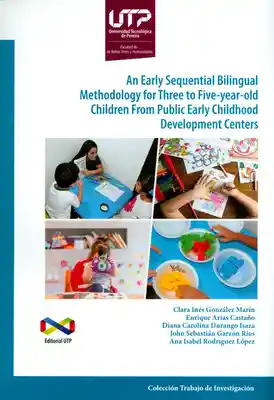An early Sequential Bilingual Methodology for Three to Five-year-old Children From Public Early Childhood Development Centers
Por el momento no disponemos de este producto en tu zona. Puedes revisar tu dirección o descubrir otros productos similares.
Información del producto
A Case Study on the Implementation of an Early Sequential Bilingual Methodology on Three- lo Five-year-old Children at a Public Early Childhood Development Cerner in the Ciry of Pereira. This research study explored the needs, requirements and perceptions towards the design of a proposal for bilingual early childhood in a public Early Childhood Developrnent Center (CDC) located in Pereira, Colombia. After analyzing the requirements of the CDI in regard to the processes of leaching and learning Spanish, the researchers designed a methodological proposal for early-sequential bilingual education. The resulls remarked the advantages, challenges and requirements to apply a bilingual program, in these types of institutions. They also suggest how the use of audio and visual materials contribute to different factors such second language development, to reduce additional factors, as it is discipline, among others. Additionally, the use of strategies such as lesson planning and drilling are fundamenlal to obtain observable results concerned with children production skills in order to arliculate both languages development. Teaching English lo children between 3 to 5 years old emerges as a model for bilingual education inasmuch as their age, posilive attitude towards the language, among other factors, greatly enable the applicability of the proposal framed in the book. Finally, though the report of this document is forrnulated as a case study design, the project has been piloted and implemented in many early childhood development centers in the city of Pereira with similar results.
